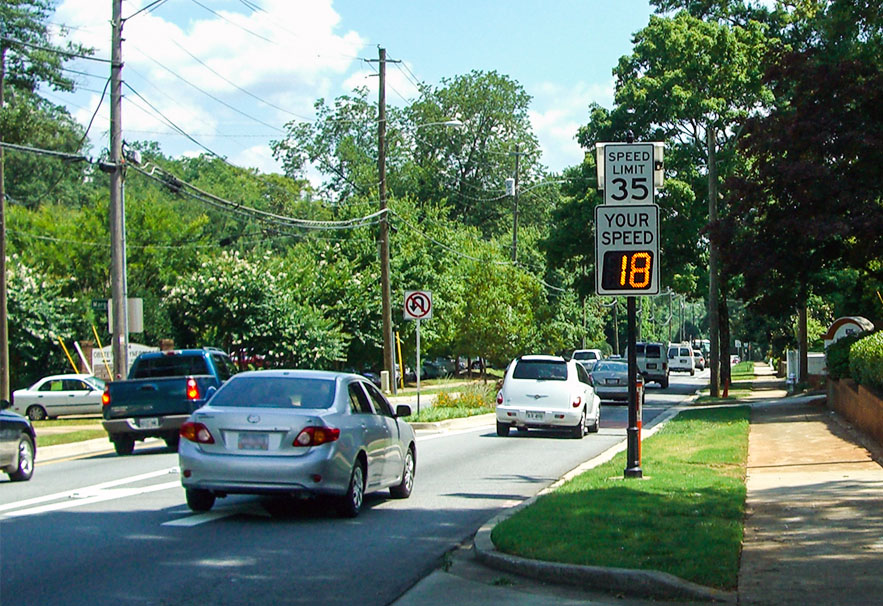Increase in Nation-wide Orders and Deployment reflects Survey that finds “Your Speed” Signs to be Highly Effective on Residential Streets and around School Zones
PORTLAND, Oregon – Information Display Company (IDC) today announced that orders for its SpeedCheck™ brand radar speed signs increased dramatically in 2006 reflecting the growing popularity of new traffic calming technologies among city planners and traffic engineers. This announcement follows results from a nationwide survey conducted earlier that shows traffic engineers rank driver feedback signs as the fastest, longest-lasting way to slow speeding traffic on residential streets and around school zones.
According to IDC, a nationwide distributor of traffic calming solutions, sales of its radar speed signs (also known as “Your Speed” signs) increased by more than 50 percent in 2006 over the previous year. In addition, a growing number of these signs are being permanently mounted to fixed posts rather than temporarily installed.
“It appears that the word has spread among city planners and engineers that the speed bump may be a thing of the past,” said Gary O’Dell, president of Information Display Company. “We are finding a growing number of safety professionals looking for ways to slow speeders without increasing noise levels, impairing emergency vehicles or causing other disruptive side effects often found with low-tech alternatives.”
In a 2006 national survey of police officers, traffic engineers, and safety professionals, driver feedback signs were identified as the most effective means of slowing traffic in neighborhoods and around schools and playgrounds. 97 percent of respondents agreed that driver feedback signs are effective at reducing traffic speeds as compared to less than 39 percent that believed speed bumps were effective.
“Unlike speed bumps or crosswalks, radar speed signs redirect the driver’s attention to his or her own speed,” said O’Dell. “This has a direct effect on driving behavior since most speeders are simply unaware of their actual rate of speed.” According to IDC, the technology’s recent move from trial to mainstream industry adoption reflects other advantages that “Your Speed” signs offer. For instance, “Your Speed” signs are able to collect traffic data and can be programmed to turn on or off at various times of day. Unlike speed bumps, rumble strips or most other “old tech” solutions, radar speed signs can also be moved from location to location.
“Mobility has been a particularly attractive selling point for budget-strapped cities that have several locations requiring enforcement,” said O’Dell. “This economic advantage is certainly one of the reasons why this new technology has emerged from its initial trial period to what is now broad industry acceptance.”
